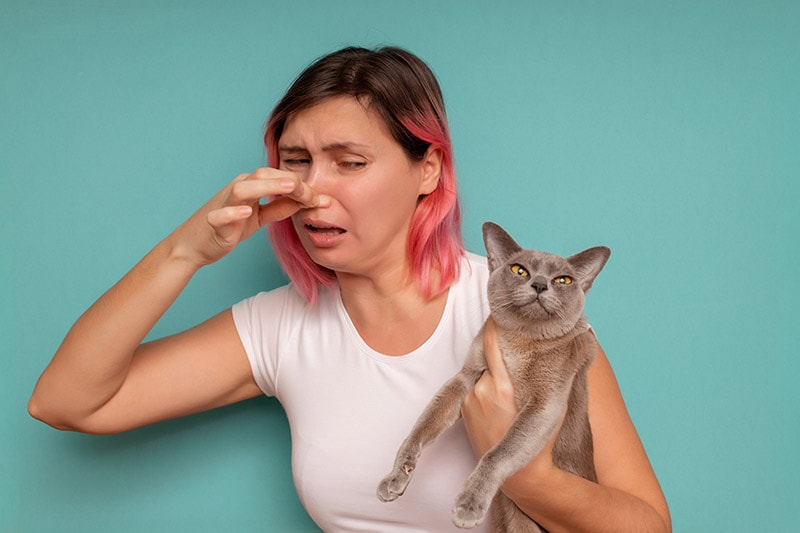How Do Cats Catch Birds? The 5 Instinctual Steps of the Opportunistic Hunter

Updated on
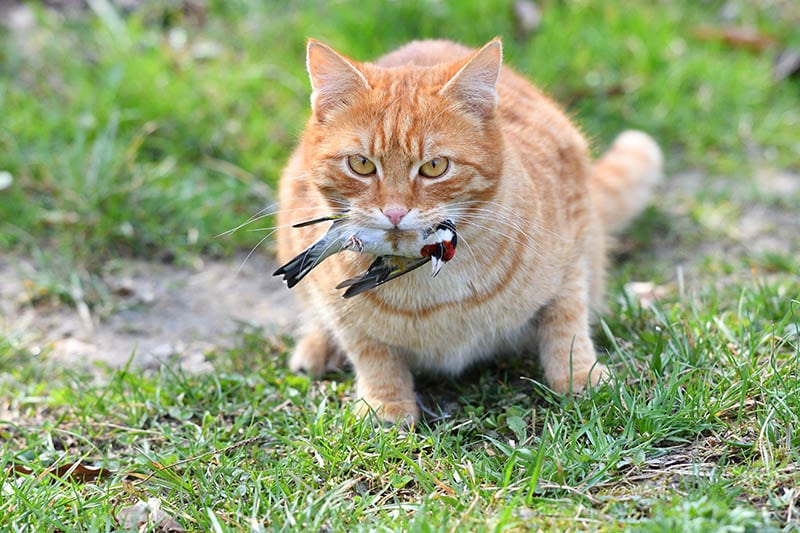
Cats are amazing creatures; they’re intelligent, incredibly fast, intuitive, and can always land on their feet. Still, you’d think that birds, with their ability to fly and incredible speed, would be a problem for cats to catch. However, as cat owners everywhere know, cats catch and kill birds by the thousands every day. How do cats catch birds, and what about their cat-catching process makes it look so easy? The simple answer is, cats are designed to be hunters. If you’re curious and would like to learn more about how cats catch birds, read on!
 Cats Are known as Opportunistic Hunters
Cats Are known as Opportunistic Hunters
Cats catch and kill birds all the time because, as opportunistic hunters, they will catch and kill whatever presents itself. Typically, cats kill rodents like mice, rats, moles, chipmunks, and squirrels. But, in situations where there are few rodents, cats will take the opportunity to catch birds instead.
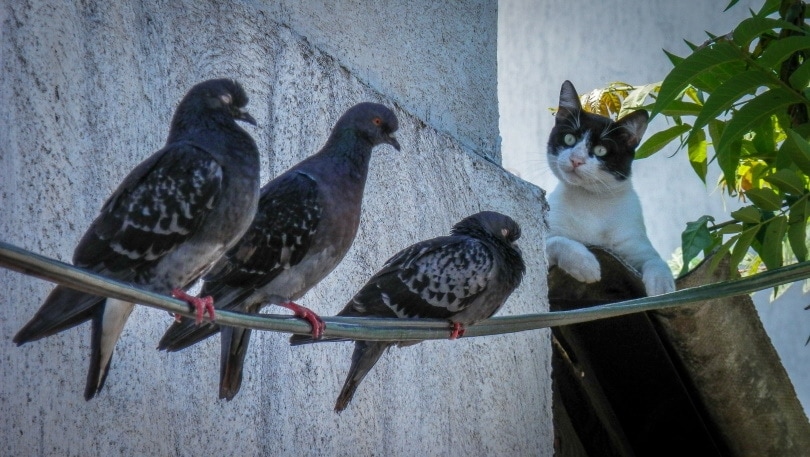
Cats Have Adapted Many Hunting Skills Over the Millennia
The biggest reason cats can catch birds is that, over thousands of years, they have developed swift reflexes and other skills that help them on the hunt. Yes, birds are fast, but the average cat has quicker reflexes, knows how to stalk its prey, and knows what to do to stun or kill it quickly. Millennia of practice have made cats some of the best hunters on the planet and no match for most small backyard critters.
Cats are Patient Hunters
When stalking prey, cats are incredibly patient and will often stalk one for a long time, waiting for the perfect moment to strike. While they wait, the average cat can stay exceptionally still, not moving a muscle and blending into the surrounding scenery very well. Because of their patience, cats are proficient bird catchers and hunters.
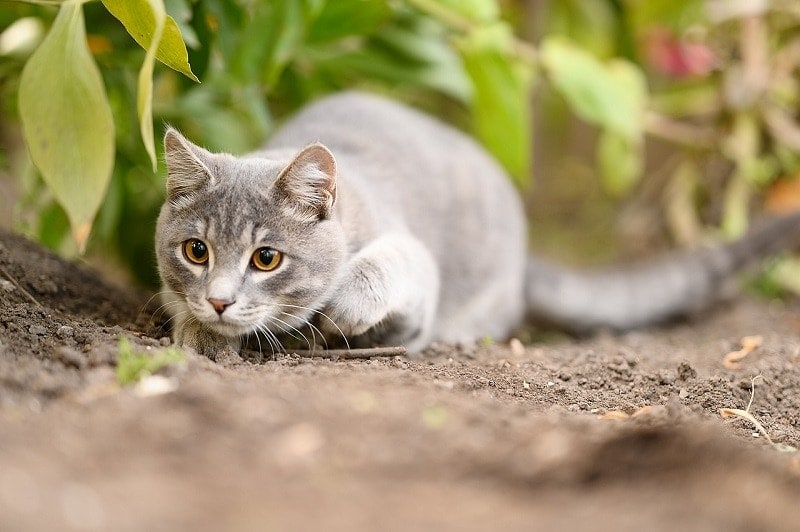
The 5 Instinctual Steps of the Opportunistic Hunter
Cats use a similar method every time they hunt, whether for birds or other prey. The methods occasionally change depending on the season and the part of the country where they live. However, the steps below are more or less what they use every time they hunt.
1. Stalking
The first thing a cat does when it wants to catch a bird is to find one unaware of its presence and start stalking it. Stalking involves using small, quick movements to get closer and closer to the bird. This takes immense skill and patience, and if the bird catches any wind of the cat, it will take off immediately.
2. Pouncing
If a cat has successfully gotten close to a bird without the bird noticing, it will suddenly and quickly pounce on the bird.
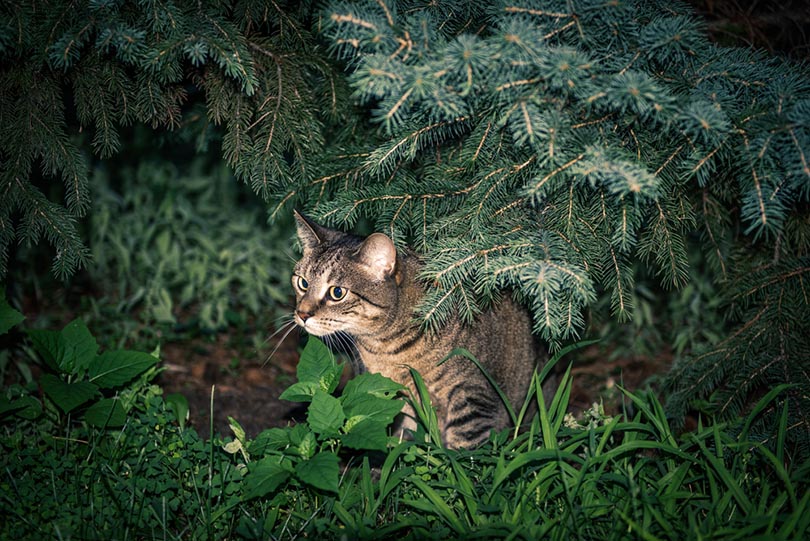
3. Swiping
As the cat pounces on the bird, it will also swipe its paws quickly toward the bird in an effort to hit it, stun it, and knock it down onto the ground.
3. Playing
Although it seems cruel, if a cat manages to injure a bird when it pounces and swipes, it will usually play with the poor thing for a while, batting it around like a ball or toy while it tries to get away.
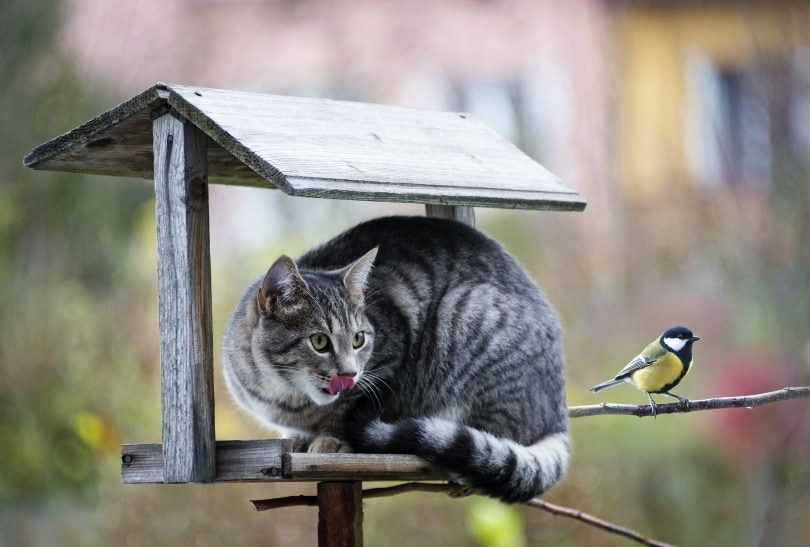
4. The Final Kill
After a cat has become bored playing with an injured bird, it will give it a bite on its neck to kill it. When it does, the bite will snap the bird’s spinal cord. It will also crush the bird’s trachea and, in most cases, sever its carotid artery. Death is usually fast, but it might take a bit longer with a larger bird.
5. Death by Saliva
If, for some reason, your cat doesn’t kill but bites a bird, the bird will most often die anyway. That’s because the saliva in a cat’s mouth is toxic for birds and can cause an infection that kills them.
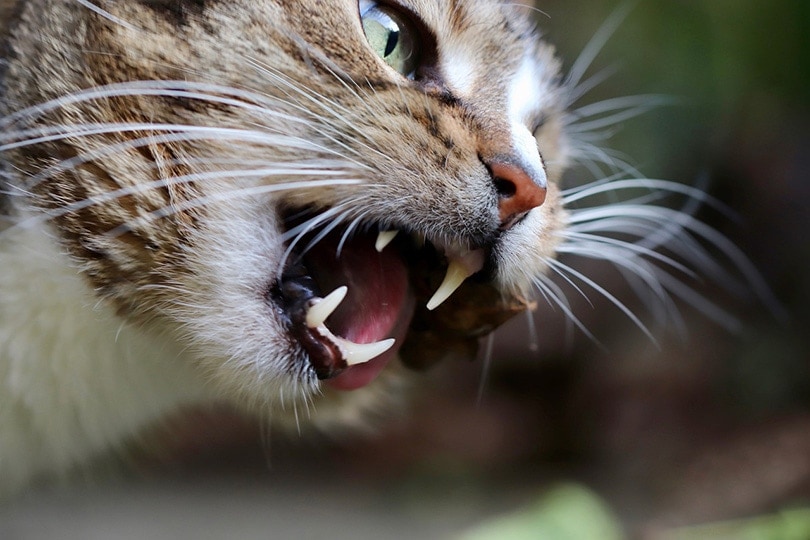
 Cats Hunting and Catching Birds Is 100% Normal Behavior
Cats Hunting and Catching Birds Is 100% Normal Behavior
While it might not be something you like about your cat, catching and killing birds is part of their core nature. Cats aren’t “bad,” nor do they hate or otherwise have any anonymity towards birds; they have evolved into highly effective bird and small animal killers.
Can You Prevent Cats From Catching and Killing Birds?
Trying to prevent your cat from catching and killing birds is almost impossible unless you keep your cats indoors 100% of the time. Even a house cat that’s never been outside and has never chased a bird will still instinctively know how to do it. There’s no way to train a cat not to catch birds because it’s an innate, unshakable part of who they are. Trying to do so would be fruitless, so if you don’t want your cat to catch and kill birds, keep them inside and never give them a chance.
If you want your cat to catch fewer birds, you can put a bell on its collar. This is a hack used by millions that helps birds know a cat’s around thanks to the ringing of the bell. The problem, however, is that a bell can also let predators know your cat’s out and about, which could be risky or fatal for your pet. So, again, the best way to prevent cats from catching and killing birds is to keep them inside.
If you put a collar with a bell on your outdoor cat, choose one with a breakaway clasp. That way, if your cat’s collar gets caught on a tree, fence, or the end of a dog’s paw, it can escape unharmed. You might lose the collar, but your favorite feline will still come home.
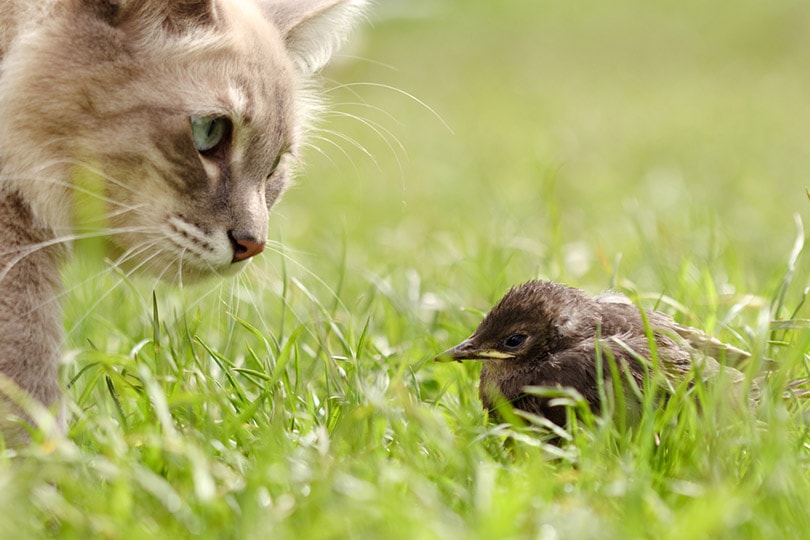
Most Cats Don’t Eat the Birds they Catch
One of the biggest debates in the United States is how to stop the millions of cats from killing so many birds. Nearly 4 billion birds are killed by domestic cats each year, a problem that’s changing the face of the country and causing problems with the ecosystem in many areas.
However, the debate rages even hotter when you realize that most cats don’t eat the birds they kill. Most of the time, they play with the bird and then kill it, offering it up as a “present” to its owners. This is a good thing and a bad thing at the same time. It’s good because if your cat isn’t eating the birds it catches, it’s well-fed. It’s bad, of course, because it means many birds are dying for nothing more than a cat’s drive to hunt prey.
How Many Birds Can One Cat Catch?
It’s estimated that a typical cat catches and kills about 34 birds a year, but for many cat owners, that might seem very low and inaccurate. If you’ve watched as your cat kills a bird every few days for years, the numbers are likely far higher. Research shows that a feral cat can kill up to 46 birds a year, although most feral cats will likely eat the birds they kill since humans aren’t feeding them.
 Final Thoughts
Final Thoughts
Over the millennia, cats have developed impressive instincts, reflexes, and abilities to hunt small prey, and birds are precisely that. By using a combination of stealth, patience, and razor-sharp reactions, (along with razor-sharp claws and teeth), cats can catch birds quite easily. The problem, of course, is that most cats don’t catch birds for food but only because of their innate instincts.
Unfortunately, cats kill nearly 4 billion birds a year, which is a problem that’s causing some heated debate among cat owners and conservationists. Whatever your feelings for cats, birds, and the natural order of things, one thing is certain; if there’s a cat around, none of the birds in your yard are safe. To protect them, keeping your cat inside or putting a bell on its collar are the two most effective methods to prevent them from catching and killing birds.
Featured Image Credit: Klimek Pavol, Shutterstock
 Cats Are known as Opportunistic Hunters
Cats Are known as Opportunistic Hunters
 Cats Hunting and Catching Birds Is 100% Normal Behavior
Cats Hunting and Catching Birds Is 100% Normal Behavior